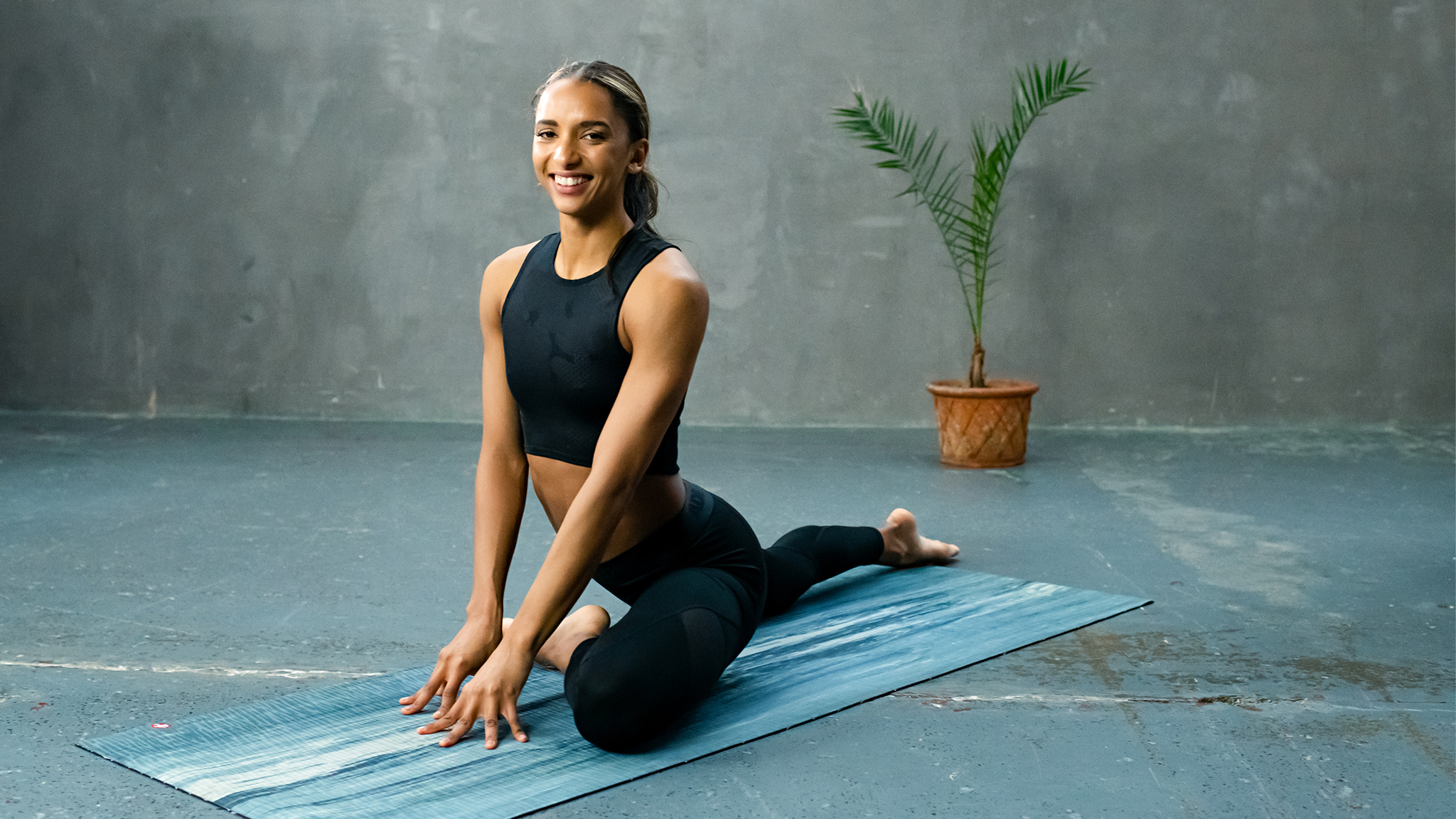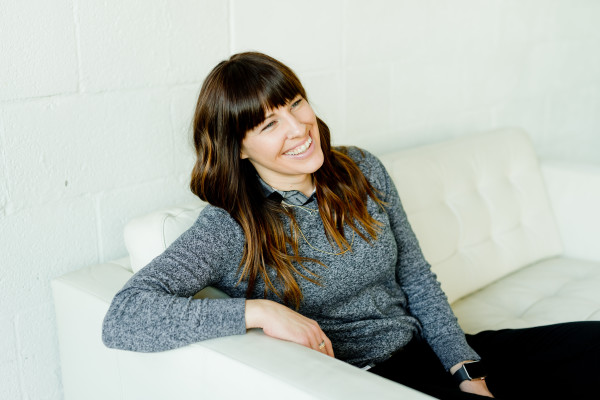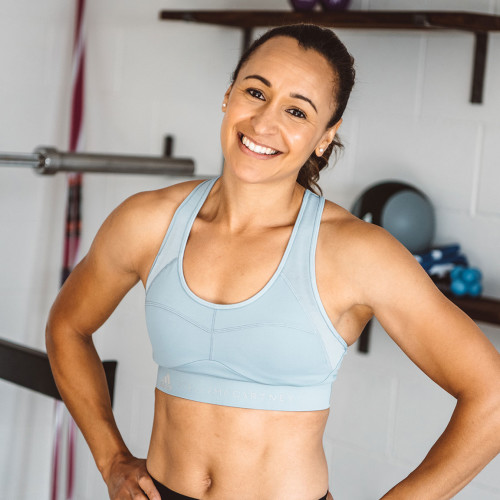7 things you need to know if you are new to yoga
3 years ago
Training3 years ago
Training
Still not taken the yoga plunge? Given it a go but don’t know what all the fuss is about? Then here are some insider tips to help you get the yoga bug, courtesy of Jennis yoga coach, Lina Nielsen
Over the years yoga has gained a bit of a reputation for being an exclusive club for zen seekers or the super bendy. But, according to Jennis yoga coach Lina Nielsen , there are no barriers to giving yoga a go, and by adding a yoga session into your week you’ll enjoy a host of strength and body benefits.
“Yoga may look serene, but it’s deceptively powerful,” says Lina, “strengthening underused muscles, helping you run faster, increasing stride length , enhancing flexibility and preventing injury. By adding just one yoga flow to your weekly schedule you’ll find it actually helps with other aspects of your fitness."
Here, Lina chats through some of the other myths and misconceptions for yoga newbies.
“If you’re just starting out with yoga,” says Lina, “you probably have loads of questions, and the poses may feel a bit strange. That’s perfectly normal. Like anything, it takes a bit of time to get used to the moves, and it’s also totally normal for it to take time to feel comfortable in the poses. The whole point of yoga isn’t to perfect every pose on day one, it’s about adapting the poses to suit you and gradually building your flexibility.
"When I teach my classes, I always offer modifications to make things easier,” says Lina. “And, as you get stronger, I’ll offer progressions to make things more challenging. There is no one size fits all when it comes to yoga. There’s just what’s right for you and I’ll help you find that.
“For example, the first time you do downward-facing dog, it will probably feel uncomfortable: your shoulders could shake and your hamstrings feel super-tight. But, if you practise yoga regularly, you’ll get stronger and your downward dog will start to feel easier."
Yoga isn’t meant to be a competition. It’s about how it makes you feel, physically and mentally.
The traditional ancient names of lots of yoga poses may be pretty wordy, but don’t let that put you off. Most yoga teachers use easy-to-remember translated names instead.
This means that while ‘utthita trikonasana’ is admittedly a bit of a tongue-twister, you’re more likely to learn it as ‘triangle pose’. Likewise, you’ll probably start to recognise the ‘happy baby pose’ instead of ‘ananda balasana’.
Ignore those Instagram shots of flexible yoga buffs doing gravity defying poses. “Yoga on social media has become a place to show off, but it’s not a true reflection of yoga classes and this can put beginners off,” says Lina.
Yoga isn’t meant to be a competition. It’s about how it makes you feel, physically and mentally. So, ignore those #yogainspiration headstands and just focus on building your own strength and flexibility.
There’s a particular way to breathe when you’re practicing yoga, called belly breathing. This takes a bit of getting used to, but it’s helpful for relaxation; it will help you hold poses for longer and will also help you feel more focused in the session.
“In daily life, we tend to breathe from our chests, especially when we’re stressed. This forces us to take shallow breaths and can actually increase the stress on our bodies,” says Lina. “With belly breathing, your breathing comes from your abdominals or belly and you should see your belly rise and fall rather than your chest.”
To try it right now, try breathing in through your nose. As you inhale, try and fill your belly up with air. Then, as you exhale, push the air through your mouth and concentrate on letting your belly fall again.
Although it’s probably not something you crack straight away, stick with it and you’ll start to notice the benefits of belly breathing both on and off the mat.
Whether you’re a beginner or someone who has practised downward dog for years, one massive bonus to yoga is that you can always stop mid-move to rest if a pose feels too much. “When I teach a class," says Lina, "I actively encourage people to adopt a child’s pose during a flow if they need a rest - and this was something I was encouraged to do when I was first learning, too.”
Once you start practising yoga regularly, you’ll be surprised by the strength gains you can make
Got muscle soreness in areas you didn’t know existed after your first class? That’s totally fine and totally normal. “Yoga engages lots of underused, small muscles in your body that might not get worked in more traditional styles of fitness,” says Lina. “And a lot of new poses might stretch into areas that you don’t often work.”
If you do feel a gentle ache, try one of Jess’s gentle stretch and recovery sessions in the Jennis programmes.
(Please note: if you experience pain in your joints or ligaments as opposed to just muscles soreness, this may be a sign of injury and you should see your GP.)
Once you start practising yoga regularly, you’ll be surprised by the strength gains you can make. “The small muscles you engage during a yoga session work together to help your bigger muscles strengthen,” says Lina, “which can make you stronger overall.
"The key with yoga is perseverance. I probably shouldn't say this, but I actually hated my first yoga class. I didn't feel I could get the moves right and I really struggled with flexibility. I'm so glad I kept at it, though. It's helped me physically and mentally, and you'll definitely see similar gains if you keep going with it."
 Cycle syncing
Cycle syncing Perimenopause
Perimenopause Perimenopause
Perimenopause Perimenopause
PerimenopauseSign up to learn everything you need to know about CycleMapping, plus how you can live better and feel better through optimising your fitness to you.
This website uses cookies to ensure you get the best experience on our website. Learn more

Sign up for the very latest news on women's fitness, health and hormones, plus be the first to receive exclusive offers and extras